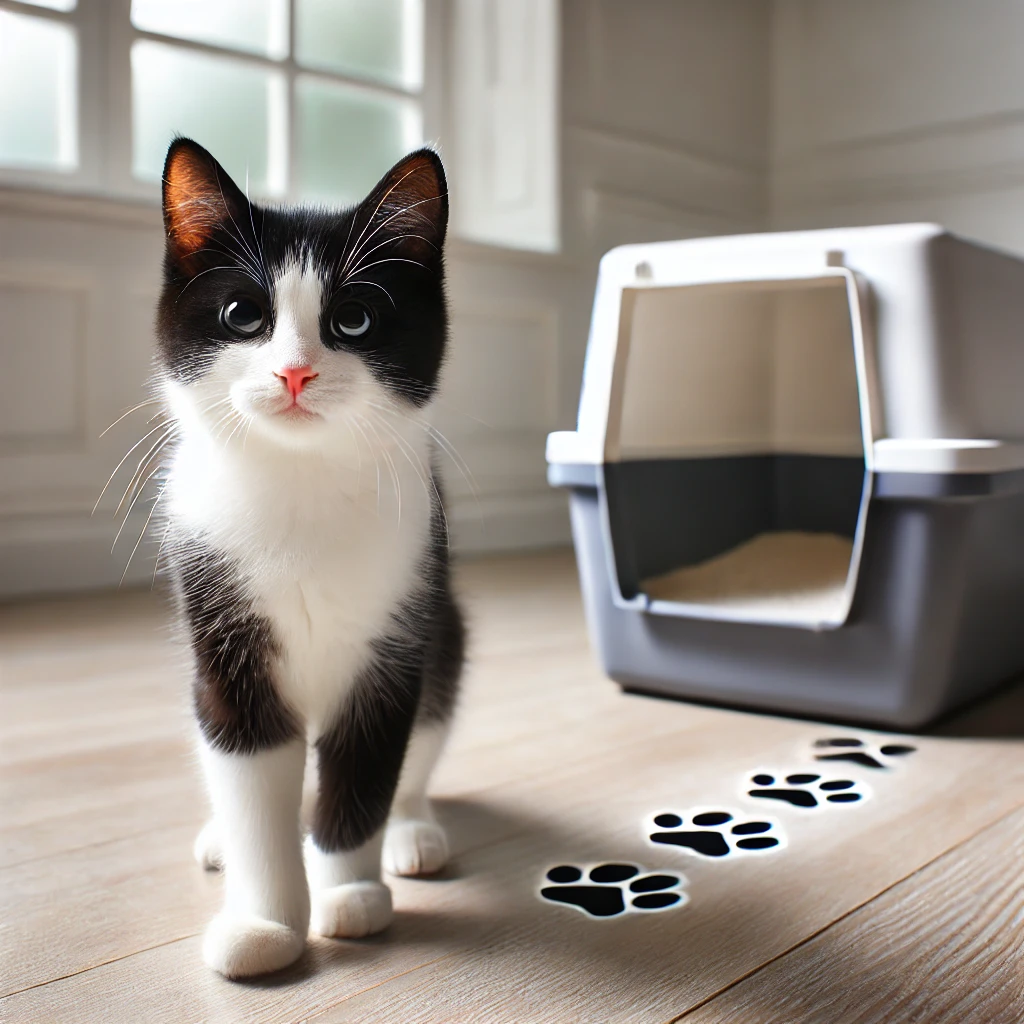Did you know that cats spend up to 20% of their waking hours grooming themselves? This natural cleanliness instinct makes litter box training a breeze for most feline friends. Whether you’re welcoming a new kitten or helping an older cat adjust to a new routine, this guide will set you up for litter box success.
Understanding the Basics
Cats have an innate drive to bury their waste, which makes litter box training surprisingly straightforward. The key is creating the right environment and using positive reinforcement. While the process typically takes 4-6 weeks, remember that every cat marches to the beat of their own drum. Patience is your secret weapon here!
Choosing the Right Litter Box
Picking the perfect litter box is like finding the right pair of shoes – it’s all about comfort and fit. Here’s what to keep in mind:
- Size matters: Your cat’s litter box should be their personal spa retreat. Aim for a box that’s at least 1.5 times your cat’s length, giving them plenty of room to do their business in style.
- To cover or not to cover: Some cats prefer the privacy of a covered box, while others like to keep an eye on their surroundings. Why not offer both and see which one your cat gives a thumbs-up (or paws-up)?
- The magic number: Follow the “n+1” rule – have one more litter box than the number of cats in your home. This prevents litter box traffic jams and reduces the chances of accidents.
Selecting the Right Litter
Choosing the right litter can make or break your cat’s litter box experience. Here’s the scoop:
- Texture is everything: Most cats prefer litter that feels like a sandy beach between their toes. Soft, fine-grained litter is usually a hit.
- Keep it au naturel: Cats have sensitive noses, so skip the fancy fragrances. Unscented litter is the way to go.
- To clump or not to clump: While clumping litter makes your clean-up job easier, some cats have their own preferences. It’s worth experimenting to find your cat’s favorite.
Don’t be afraid to try different types of litter. Once you’ve found your cat’s preferred variety, stick with it like glue to maintain consistency.
Placement of the Litter Box
Location, location, location! The right spot can make all the difference:
- Seek out a quiet corner: Cats appreciate a little privacy when nature calls. Find a low-traffic area where your cat can do their business in peace.
- Keep it accessible: Make sure your cat can easily reach the litter box, especially if you have a kitten or a senior feline.
- Food and litter don’t mix: Just like us, cats prefer not to eat where they eliminate. Keep the litter box far from food and water dishes.
- Avoid spooky spots: Dark, enclosed spaces or areas near noisy appliances might scare your cat away from the litter box.
- Multi-level living: If your home has multiple floors, place a litter box on each level for convenient access.
Introducing Your Cat to the Litter Box
Now that you’ve set the stage, it’s time for the grand introduction:
- Give your cat a tour: Show them where the litter box is located and gently place them inside.
- Timing is everything: Take your cat to the litter box after meals, naps, and playtime – these are prime potty times.
- Read the signs: If you notice your cat sniffing, scratching, or crouching, it’s go time! Gently guide them to the litter box.
- Demonstrate the dig: For kittens, you can gently take their paw and show them how to scratch in the litter. They’ll get the idea quickly!
- Leave a hint: When training an older cat, you can place a small amount of their waste in the litter box to signal its purpose. It’s like leaving a calling card!
Positive Reinforcement
Positive reinforcement is the secret sauce of successful litter box training:
- Celebrate success: When your cat uses the litter box correctly, break out the party hats! Offer treats, praise, or gentle pets immediately after.
- Consistency is key: Keep up with the rewards to reinforce good behavior.
- No shame in the litter game: Never punish or yell at your cat for accidents. This can create negative associations and make training harder.
Maintaining the Litter Box
A clean litter box is a happy litter box. Here’s how to keep it fresh:
- Daily scooping: Remove waste and clumps every day to keep things tidy.
- Deep clean: Give the box a thorough cleaning every 1-2 weeks with mild soap and warm water.
- Litter refresh: Replace the litter completely when needed – typically every 2-3 weeks for clumping litter or weekly for non-clumping varieties.
- Just right: Keep the litter at a comfortable depth of about 2-3 inches.
Troubleshooting Common Issues
If your cat is giving the litter box the cold shoulder, consider these potential issues:
- Health check: Sudden changes in litter box habits could signal a medical problem. When in doubt, consult your vet.
- Stress busters: Changes at home can throw your cat off their game. Extra attention and pheromone diffusers can help reduce stress.
- Litter box blues: Your cat might not be a fan of the litter, the box itself, or its location. Try mixing things up to see what works.
- Cleanliness is next to catliness: Cats are neat freaks. Make sure you’re keeping the litter box spick and span.
- Easy access: Ensure the litter box is easily reachable, especially for kittens, senior cats, or those with mobility issues.
Cleaning Accidents
When accidents happen (and they will), proper cleaning is crucial:
- Enzyme power: Use an enzymatic cleaner designed for pet odors to thoroughly eliminate smells.
- Skip the ammonia: Avoid ammonia-based cleaners, as they can smell like urine to cats and encourage repeat marking.
- Quick action: Clean up accidents promptly to prevent your cat from associating that spot with their bathroom breaks.
Remember, litter box training is easy for most kittens because they’re naturally clean creatures. With patience, consistency, and a dash of positive reinforcement, you’ll be on your way to litter box success. Each cat is unique, so don’t be discouraged if it takes a little time to find the perfect litter box setup. Before you know it, your feline friend will be a litter box pro, and you’ll be wondering why you ever worried in the first place!
How to litter train a cat and why it’s never too late – it’s true! With the right approach, even older cats can learn new tricks. So roll up your sleeves, grab that litter scoop, and get ready for a cleaner, happier home for both you and your feline companion.


Leave a Reply